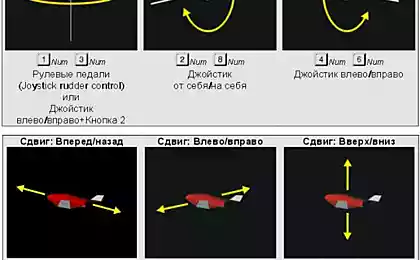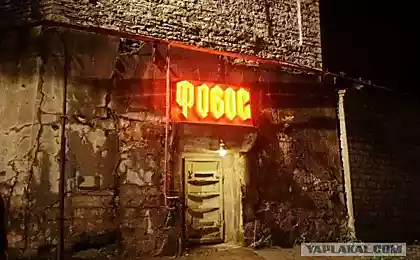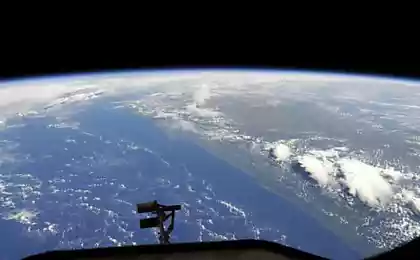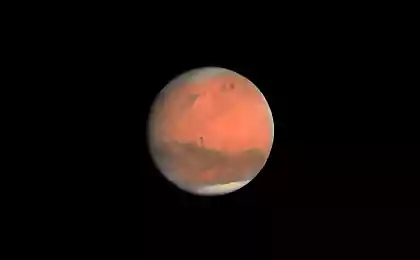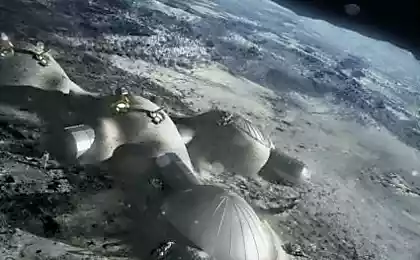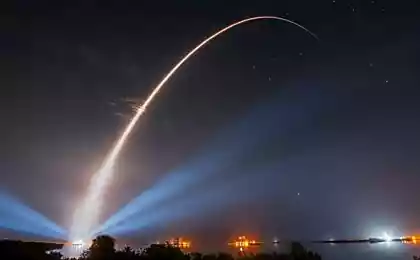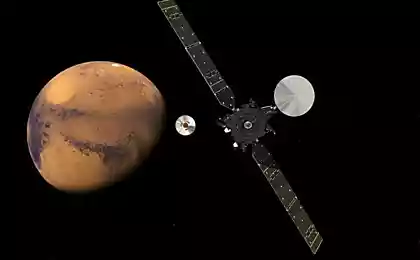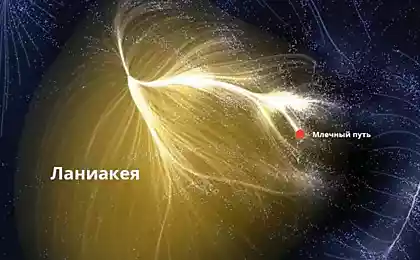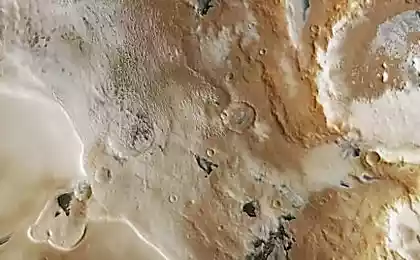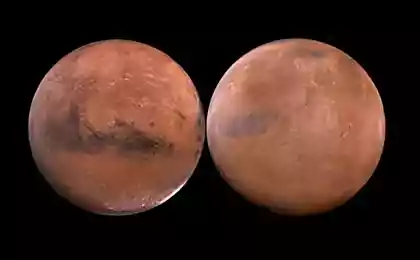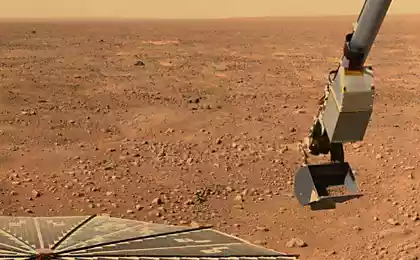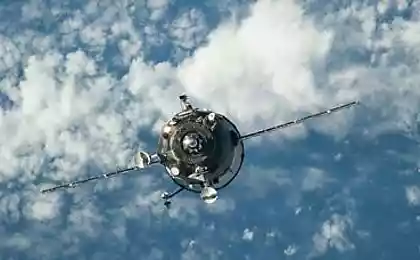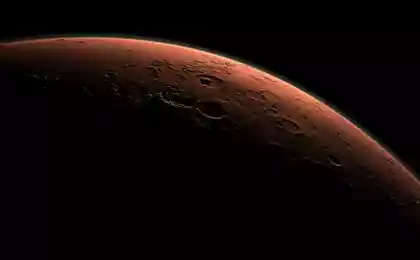279
Landscapes of Mars, as seen from orbit
17 photos
Shooting NASA / JPL / University of Arizona here
After how many years it all vytopchut ..?
1.Obnazhivshiesya rock foundations in the region Aureum Chaos
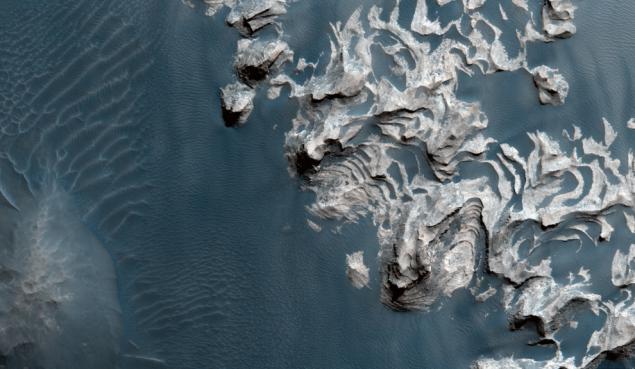
Small, about 330-meter crater in the southern hemisphere.

Erosion of the south polar ice cap.

dust devil tracks, removes the top layer of dust and drew a deeper layer of soil.

Kepsha poriskhozhdenie attributes this "channel" in the region Elysium volcanic processes.
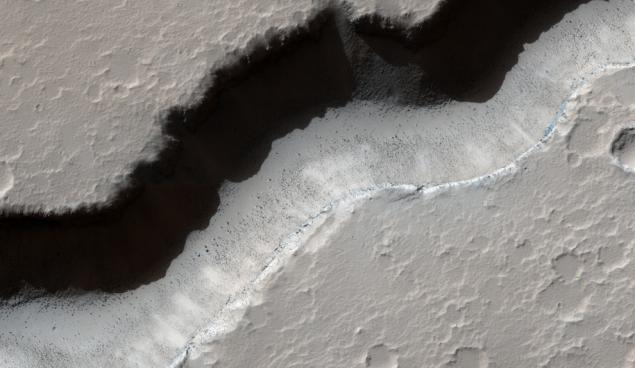
The dunes in the northern polar region of Mars. Polygons formed by networks of cracks cover the space between the dunes and may indicate where the ice-rich permafrost.
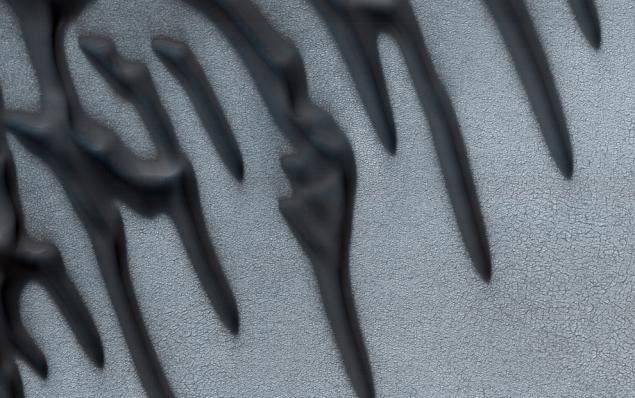
Avalanches in the northern polar mountain ranges. Weight avalanche, probably containing fine ice and dust separated from a high cliff and poured a cascade of more gentle slopes below. Cloud was about 180 meters (590 feet) in diameter.

Erosion of the south polar cap.

Plot area of Abalos Undae covered dunes. Sands appear bluish because of their basaltic composition, while lighter areas are probably covered with dust.
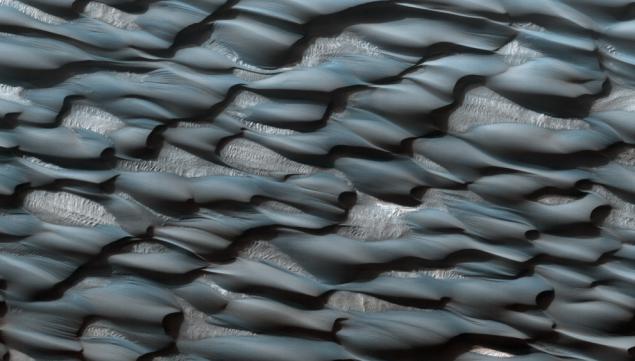
The nature of this education is not yet clear to the end.
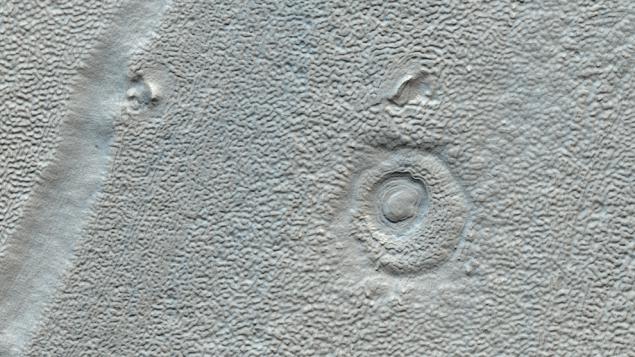
It is not hollow and the bulge - a big dune in a crescent shape.
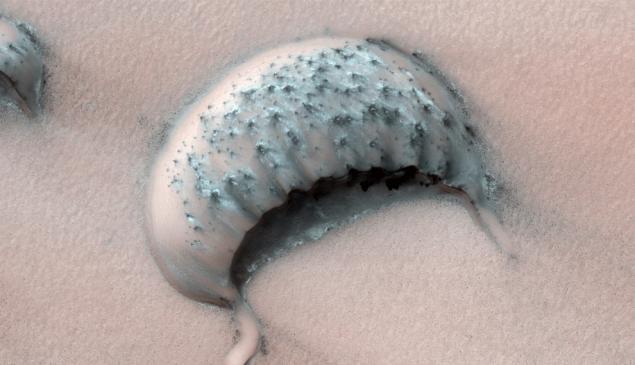
Victoria Crater is about 800 meters in diameter. NASA's Mars rover explored this crater and its walls in 2006
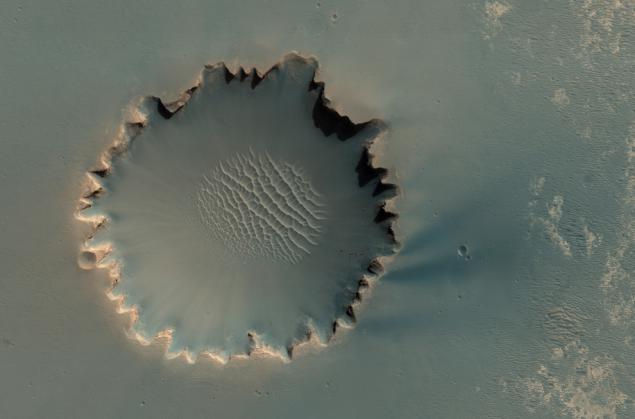
Dunes in Russell Crater
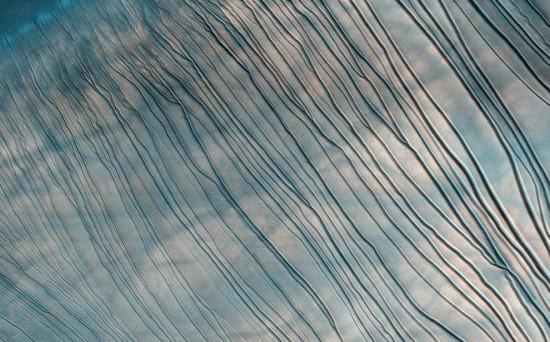
"Swiss cheese" - the landscape, typical of the south polar residual cap.

Traces of vapor escaping from the depths of the soil under the influence of heat from the sun.

Erosion dioxide ice in the south polar region of Mars
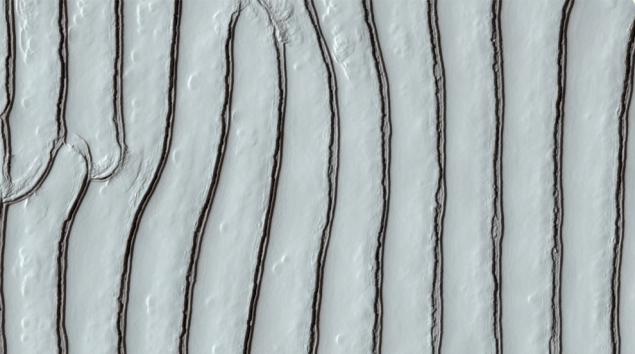
Dust tornado moving east of the Hellas basin and south of Reull Vallis. The diameter of this dust devil is about 200 meters, but on the surface it is probably much less. Along the length of the shadow can be determined that the height of about 500 meters.

Source:
Shooting NASA / JPL / University of Arizona here
After how many years it all vytopchut ..?
1.Obnazhivshiesya rock foundations in the region Aureum Chaos

Small, about 330-meter crater in the southern hemisphere.

Erosion of the south polar ice cap.

dust devil tracks, removes the top layer of dust and drew a deeper layer of soil.

Kepsha poriskhozhdenie attributes this "channel" in the region Elysium volcanic processes.

The dunes in the northern polar region of Mars. Polygons formed by networks of cracks cover the space between the dunes and may indicate where the ice-rich permafrost.

Avalanches in the northern polar mountain ranges. Weight avalanche, probably containing fine ice and dust separated from a high cliff and poured a cascade of more gentle slopes below. Cloud was about 180 meters (590 feet) in diameter.

Erosion of the south polar cap.

Plot area of Abalos Undae covered dunes. Sands appear bluish because of their basaltic composition, while lighter areas are probably covered with dust.

The nature of this education is not yet clear to the end.

It is not hollow and the bulge - a big dune in a crescent shape.

Victoria Crater is about 800 meters in diameter. NASA's Mars rover explored this crater and its walls in 2006

Dunes in Russell Crater

"Swiss cheese" - the landscape, typical of the south polar residual cap.

Traces of vapor escaping from the depths of the soil under the influence of heat from the sun.

Erosion dioxide ice in the south polar region of Mars

Dust tornado moving east of the Hellas basin and south of Reull Vallis. The diameter of this dust devil is about 200 meters, but on the surface it is probably much less. Along the length of the shadow can be determined that the height of about 500 meters.

Source:

